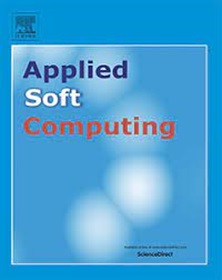Evolutionary induced survival trees for medical prognosis assessment
IF 7.2
1区 计算机科学
Q1 COMPUTER SCIENCE, ARTIFICIAL INTELLIGENCE
引用次数: 0
Abstract
Survival analysis focuses on predicting the time of a specific event, known as failure. In the analysis of survival data, it is crucial to fully leverage censored observations for which we do not have precise event time information. Decision trees are among the most frequently applied machine learning techniques for survival analysis, but to adequately address this issue, it is necessary to transform them into survival trees. This involves equipping the leaves with, for instance, local Kaplan–Meier estimators. Until now, survival trees have predominantly been generated using a greedy approach through classical top-down induction that uses local optimization. Recently, one of the most promising directions in decision tree approach is global learning. The paper proposes an evolutionary algorithm for survival tree induction, which concurrently searches for the tree structure, univariate tests in internal nodes, and Kaplan–Meier estimators in leaves. The fitness function is based on an integrated Brier score, and by introducing a penalty term related to the tree size, it becomes possible to control the interpretability of the obtained predictor. The work investigated, among other aspects, the impact of censoring, and the results obtained from both synthetic and real-life medical datasets are encouraging. The comparison of the predictive ability of the proposed method with already-known univariate survival trees shows statistically significant differences.
求助全文
约1分钟内获得全文
求助全文
来源期刊

Applied Soft Computing
工程技术-计算机:跨学科应用
CiteScore
15.80
自引率
6.90%
发文量
874
审稿时长
10.9 months
期刊介绍:
Applied Soft Computing is an international journal promoting an integrated view of soft computing to solve real life problems.The focus is to publish the highest quality research in application and convergence of the areas of Fuzzy Logic, Neural Networks, Evolutionary Computing, Rough Sets and other similar techniques to address real world complexities.
Applied Soft Computing is a rolling publication: articles are published as soon as the editor-in-chief has accepted them. Therefore, the web site will continuously be updated with new articles and the publication time will be short.
 求助内容:
求助内容: 应助结果提醒方式:
应助结果提醒方式:


